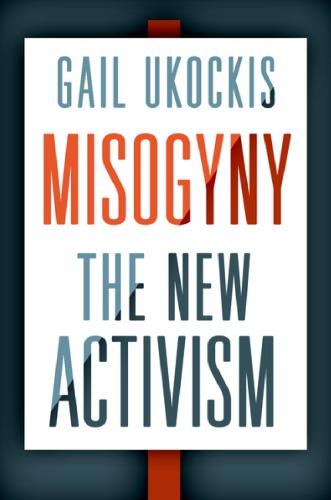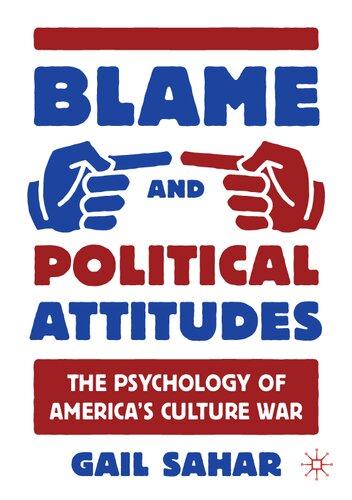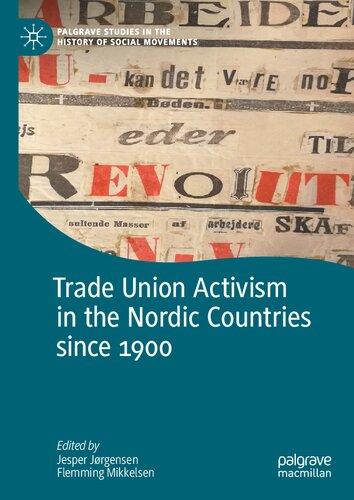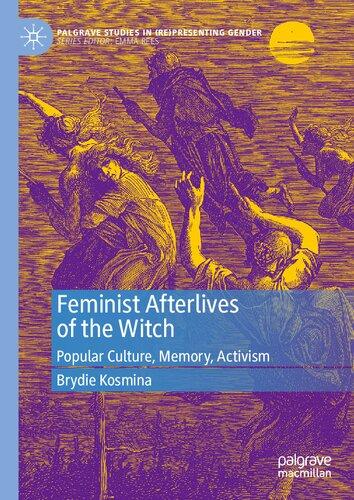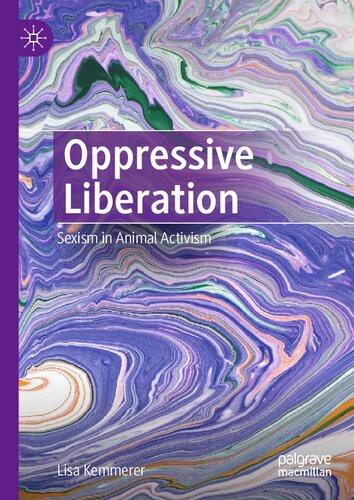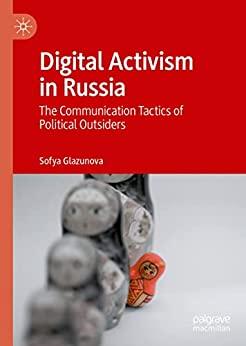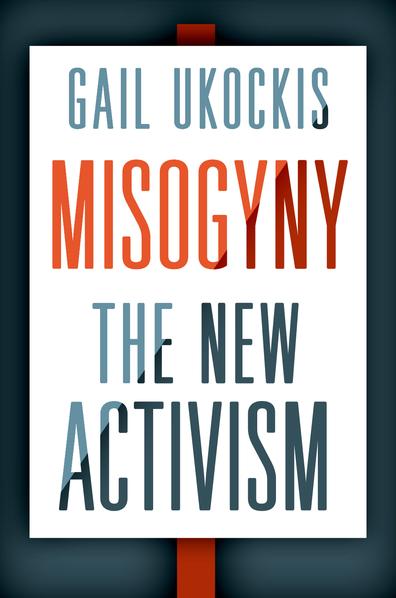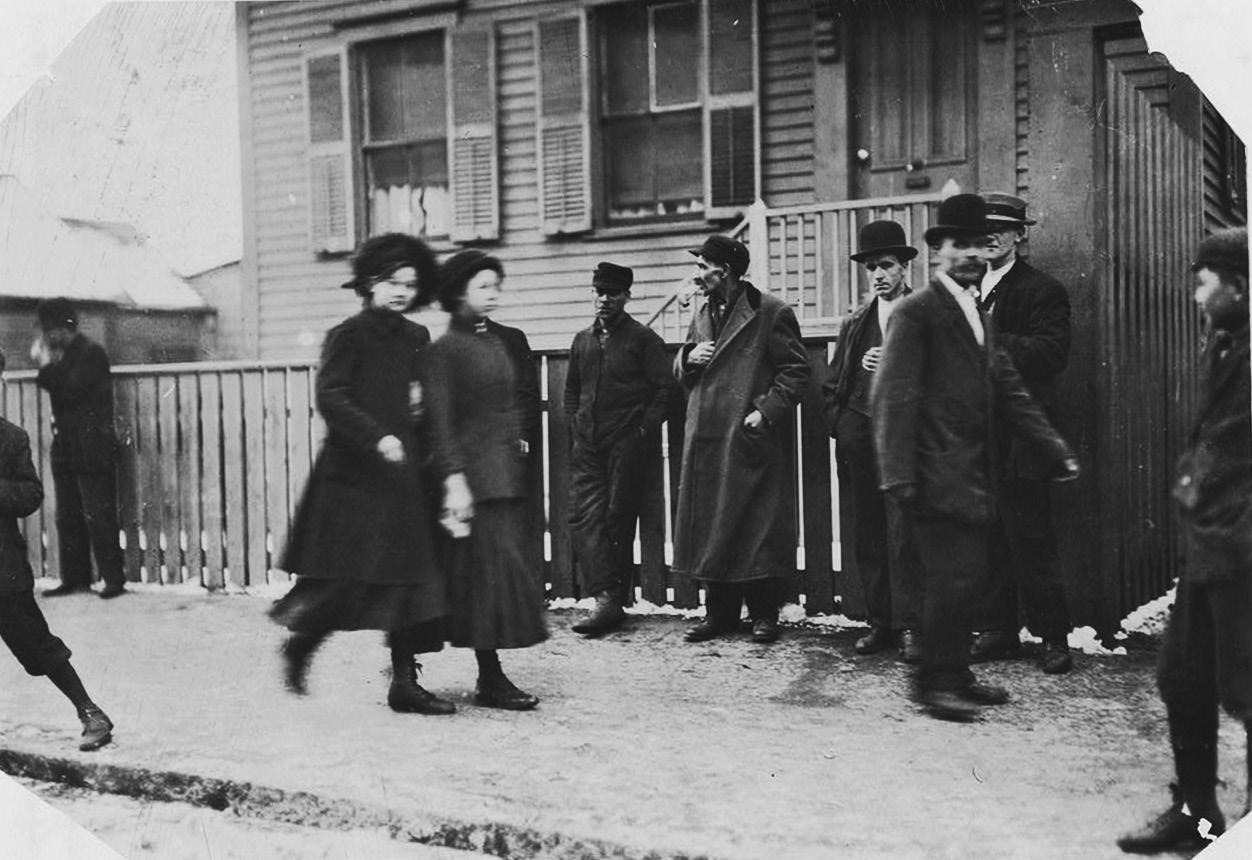PREFACE
“I am going to depress the hell out of you!” That was what I used to declare on the first day of my policy classes. In my view, policy is the response to ongoing problems such as poverty, racism, and climate change. Without studying the problems first, one cannot work for social change. However, the point of this book is not to depress the hell out of you. Instead of spending money on such a grim book, you would be better off buying a decent bottle of wine or some gourmet chocolate. Yes, women’s rights have suffered severe setbacks in the recent past. The resurgence of feminism, though, has energized a wide range of people all over the world. If you are concerned about the status of women, you are certainly not alone.
Do you identify yourself as a feminist? I don’t care as long as you buy or at least read this book. Friends advised me to avoid the use of “feminist” in the title because it might scare off some folks. The crisis facing women today is too urgent to squabble over the “F” word. If you want to fight misogyny
without calling yourself a feminist, go for it. Maybe call yourself an anti-misogynist instead, I don’t care. We still need you.
Honestly, the fact that I have written two books about women’s issues has resulted in my new identity as a Scary Feminist. When I tell somebody about my books, I get that double-take—but you don’t look like a Scary Feminist. I do not snarl, nor do I show any fangs. Hell, I even wear a bra. In fact, I actually smile and joke around a lot. Sometimes their surprised reaction is as extreme as if I had just grown another head. But you’re a nice person, that look says.
Once at a holiday gathering, a friend introduced me to the group. “This is Gail. She’s writing a book about women’s issues but she’s not a feminist.”
I had to correct her. “Um, actually I am a feminist.”
“Well, you know what I mean! You don’t hate men or anything like that.”
One part of me wanted to mention the pair of scissors I carried around to castrate men, but I behaved myself. Instead, I meekly agreed that I did not hate men or anything like that.
As a Scary Feminist, I should have a solid understanding of deconstructivist post-humanism or whatever. My primary identity, though, is not “feminist” but “writer/activist” with a keen awareness of social injustice. The oppression of women is only one aspect of these injustices. Interrelationships have always intrigued me, such as HIV prevention as related to gender dynamics—will or won’t he put on a condom?
My intellectual background is diverse. My senior honor thesis was on T. S. Eliot’s “The Wasteland” (“April is the cruelest month”). In my 20s, I had pursued a doctorate in history. During those four years of graduate school, I coauthored a book about public works in Colorado (yes,
I wrote the chapter on sewers!) and wrote my thesis about the Vietnam War. Then I spent 10 years in the business world working for finance and insurance companies. To rescue my brain from “cubicle psychosis,” I wrote novels that never got published.
When I had entered the social work field in my late 30s, I had no idea of what my specialty would be. I ended up writing my dissertation on HIV/AIDS after a field placement in that area. It just happened. Like my interest in HIV/ AIDS, the women’s issues textbook emerged because of life circumstances. When I first started teaching at a small university, I was lucky enough to develop my own course in women’s issues that covered US and global concerns. Unable to find a textbook to match my course, I wrote my own. Teaching and writing about feminism, of course, have strengthened my belief that gender equality is critical in today’s world. Still, I probably never would have written that book if I had been teaching at a larger school with its own women’s studies faculty.
During my social work career, I have also worked with several populations: homeless persons, TANF/welfare recipients, and HIV-positive persons. After a stint in gerontology, now I am a drug counselor at a medicationassisted treatment clinic. Obviously, these experiences have deepened my commitment to fighting injustices such as misogyny.
What is misogyny anyway? I simply define it as the hatred of women. (Don’t worry, Chapter 1 has a more indepth discussion of this concept.) Unfortunately, the word sounds too much like “massage” as in “massage therapy.” When I would tell people that I was writing a book against misogyny, I would sometimes get the stink eye. To all the
massage therapists and clients out there—it’s cool, I have nothing against you.
You may wonder why you should even be buying this book when that bottle of wine looks quite tempting. When I was writing this book in 2017, I could not decide between the songs “I Wanna Be Sedated” or “Comfortably Numb.” As one Facebook post stated, “These days if a clown invited me into the woods, I would just go.” When it comes to political depression, I get it. Whimpering under a pillow can be one way to cope with the recent political chaos.
Time’s up! (Okay, I misquoted Oprah here.) Get out of bed or off the couch and exercise your rights! We have work to do! You are going to be one kick-ass (or genteel) advocate for women now!
But where do we even begin? That question is why I wrote this book. Thoughtful activism, not random actions, will help us to fight misogyny.
Read. Discuss. Plan your actions. And remember: leave the massage therapists alone—unless they are misogynistic, of course.
ACKNOWLEDGMENTS
Writing this book has been both a joyful and aggravating experience. Many thanks to my friends and family who boosted my endeavors this past year. At Oxford University Press, the editors Dana Bliss and Andrew Dominello have been wonderful. Dana Bliss was the one who had suggested this book idea, so I hope that he is satisfied with the result.
Since its inception, the book project has involved several in-depth conversations with individuals and groups. These community members helped me to develop my concepts and provided me with striking insights. Without the folks listed here, the book would have been sparser and less relevant. Thank you!
• Members of COUNT (Central Ohio United NonTheists) group who had a discussion on masculinity: five men and three women
• Shirley Curtis, social worker in rural Ohio
• Students from my social work classes at Sinclair Community College and Wright State University
• Cara Iacovetta, artist
• Larry Meyers, retired mental health professional
• Anjel Stough-Hunter (sociology professor) and her friends
• Kari Higgins, social worker
• Laura Gaines, social worker
• Julie Hart, sociology professor and peace activist
• Phil Hart, carpenter
• Michel Coconis, social worker and hell-raiser
• Miriam Potocky, social work professor
• Deona Hooper, activist
• Vickie Deisner, animal rights activist
• Ellen Muncy, hair stylist
• Dan O’Kane, corporate recruiter
• Joseph Ukockis, graduate student
• Paul Morgal, student
• Michele Blackford, social worker
• Julia D’Agostino, social worker
• Dorothy Martindale and Colleen Dempsey, National Association of Social Workers
• Robin Mama, social work professor
• Susan Wismer, Sexual Assault Response Network of Central Ohio
• Laura Hancock, journalist
• Ed Norwood, IT
• Writing group at Delaware Library
MISOGYNY
INTRODUCTION
I’m a Feminist—Now What?
THE RESURGENCE OF MISOGYNY
During an August weekend in 2017, White supremacists marched through the streets of Charlottesville, Virginia. Called “Unite the Right,” these neo-Nazis chanted slogans such as “blood and soil” and “Jews will not replace us!” One of the White supremacists deliberately rammed his car into a crowd of counterprotesters, an act of mindless violence that killed Heather Heyer. Instead of acknowledging her death as a tragedy, though, the editor of the Daily Stormer “excoriated her appearance and called her a ‘drain on society.’ [He] also noted Heyer’s marital and parental status, calling her a ‘fat, childless, 32-year-old slut,’ claiming that her failure to marry and have children meant that she had ‘no value’ ”1 . Meanwhile, popular entertainment, such as Game of Thrones, includes so many rape scenes that female stunt performers have a new specialty: rape choreography. Because “filmmakers still rely on (often unnecessary) rape scenes as a catalyst for movie and TV plots,” rape choreography has become a booming business. “Rape choreographer isn’t exactly
a desirable position (it takes an emotional toll to reenact sexual assault all day)”—especially if the director insists on 10 to 12 takes instead of a few2.
“Misogyny” (hatred of women) is a word that belongs in the dustbin of history but still appears in our current society. For decades, the word “sexism” seemed sufficient to describe the demeaning treatment of females. One typical definition of sexism is “prejudice or discrimination based on sex or gender, especially against women and girls”3. Sexism can be subtle, such as a man talking over a woman during a business meeting.
In contrast, the word “misogyny” is a much stronger word than “sexism” because it is simply defined as hatred of women. Although the overlap between sexism and misogyny is obvious, misogyny implies an overt and violent aspect. Intimate partner violence (also called domestic violence), sexual assault, street harassment, and judging a female merely on her appearance are but some examples of misogyny. In the historical context, many religions and philosophers have justified this oppression of women.
Hillary Clinton, who has been the target of extreme misogyny, defines the difference between sexism and misogyny this way:
A note here on terminology. Others might have a different view, but here’s how I see the distinction between sexism and misogyny. When a husband tells his wife, ‘I can’t quite explain why and I don’t even like admitting this, but I don’t want you to make more money than me, so please don’t take that amazing job offer,’ that’s sexism. He could still love her deeply and be a great partner in countless ways. But he holds tight to an idea that even he knows isn’t fair about how successful a woman is allowed to be.
Sexism is all the big and little ways that society draws a box around women and says, ‘You stay in there.’ . . . We can all buy into sexism from time to time, often without even noticing it. Most of us try to keep an eye out for those moments and avoid them or, when we do misstep, apologize and do better next time.
(But) misogyny is something darker. It’s rage. Disgust. Hatred. It’s what happens when a woman turns down a guy at a bar and he switches from charming to scary. Or when a woman gets a job that a man wanted and instead of shaking her hand and wishing her well, he calls her a bitch and vows to do everything he can to make sure she fails. 4
Later she said that both sexism and misogyny “are endemic in America. If you need convincing, just look at the YouTube comments or Twitter replies when a woman dares to voice a political opinion or even just share an anecdote from her own lived experience. People hiding in the shadows step forward just far enough to rip her apart”5.
The resurgence of misogyny, sometimes called the “new misogyny,” is part of a shifting mood in the United States that troubles many. The backlash against “political correctness” is one sign of this trend. Starting in the 1970s, mainstream culture tried to reduce the sexism and racism in their television shows and other venues. People like me began to realize that some behaviors and words were offensive, such as showing off Confederate flags at a high school that has several African American students. Some people, though, wanted to return to the “good old days” when racial epithets and crude sexism were the norm. In the late 1980s, the comedian Andrew Dice Clay gained notoriety for jokes such as these: “If my girlfriend brings home a nice looking friend of hers, I f*** her on principal. You know what I mean? Don’t throw another
bush in front of my face. What do you think I’m gonna do? Talk to it? I’m gonna bang it”6. The factor that made Clay so famous 20 years ago, his overt rejection of gender equality, has now become so commonplace that he would no longer stand out (Box 1.1).
Besides ridiculing political correctness, these misogynists are also using the Internet as a new weapon. Rape threats against female bloggers, revenge porn (i.e., ex-boyfriends posting nude pictures of women without their consent), men’s sites that promote male superiority (e.g., Red Pill), and abuse of social media (e.g., Facebook posts) are creating a frightening place in the virtual world. “On the one hand, these online images and words are bringing awareness to a longstanding problem. On the other hand, the amplification of these ideas over social media networks is validating and spreading pathology”7.
Another form of the new misogyny has been the sharp increase in the number of attacks on women’s reproductive health. On the legislative level, state lawmakers have enacted hundreds of bills that restrict abortion rights 8. The courts have also limited access to birth control, including the Supreme Court’s decision to allow employers such as Hobby Lobby to prohibit insurance coverage of IUDs (intrauterine devices, a form of birth control) based on religious grounds9. Antiabortion activists have used guns, bombs, arson, and harassment to deny women their basic health care10 .
Despite this new misogyny, though, we can remain optimistic because so many persons are speaking out and refusing to back down. One example is the comedian Amy Schumer, who is the topic of the first case study.
LIFE BEFORE WOMEN’S LIBERATION: “HE MADE ME FEEL SO SMALL”
Recently, a woman in her 70s approached me about this book. She said, “Well, I’ve been harassed but it was such a little deal. Not like what those poor women have had to deal with.”
Based on her age, I guessed that she had seen much more overt sexism than me. She had been “just a secretary” because that was the only position allowed women at that company in the late 1960s. We agreed that in those days, many “secretaries” actually ran companies but never got the credit or the money. The incident she told me was not that shocking: a married man had asked her out to dinner.
“There I was, a small-town girl from Ohio in the big city of New York, and a married man asked me out! I was so floored!”
Shocked, she was up all night trying to figure out what to say to him. When she went to him the next day, she said that she would not go out with him because he was a married man. In those days, that took some courage.
“Then he said, ‘It was only dinner. We both have to eat, right?’ He made it sound like I was crazy for thinking anything else. He tried to turn it around on me, like I was an idiot. And he made me feel so small.”
That line struck me: “He made me feel so small.” Those words capture the essence of harassment, whether a minor incident like hers or a more serious situation. We talked about how his inappropriate request had belittled her because she had been in a professional role that was ignored. Even though she was “just a secretary,” she was proud of her work. He seemed to see only a young woman he could hit on.
“I did not know what to do.” In those days, of course, she had had two options: quit or put up with it. Nobody in power would have listened to her story back then.
After I got her permission to write about this conversation, she said she was embarrassed to even mention that story because it was so minor. The fact that she had remembered it this vividly after 50 years, though, proves that it had affected her. “He made me feel so small.” Nobody wants to remember humiliating moments like these.
FIRST CASE STUDY: AMY SCHUMER AND THE HECKLER
In 2016, Schumer was performing her stand-up comedy act in Stockholm when a heckler shouted out, “Show us your tits!” She did a good job handling the situation by calling him on stage and humiliating him. By the way, his T-shirt read, “I love pussy”11. This incident illustrates some key points of misogyny, described next.
Silencing of Women
Historically, society told women to shut up or be punished. Patriarchal (male-dominated) societies must silence women to further their oppression. The heckler, then, was merely continuing the centuries-old tradition of trying to diminish a strong woman’s power. Instead of conforming to the ideal of the meek woman, Schumer is bold enough to stand on a stage to do live comedy. She has the nerve not to diminish herself by insulting her own appearance. Although the film industry still cranks out male-dominated movies with few female protagonists, women like Schumer are claiming their space by standing alone on the stage.
One early female comedian, Phyllis Diller, had to resort to self-deprecation to be allowed on stage. A typical joke was: “My photographs don’t do me justice—they look just like me”12. Another one was: “I once wore a peekaboo blouse. People would peek and then they’d boo”13. Diller’s humor was an effective defense in her time, but it is fortunate that women have other options than self-deprecation to get noticed now.
Public Sphere Versus Private Sphere
One cannot get more public than flying to another country to perform a comedy show. In contrast to modern women working outside the home and demanding respect as politicians, traditional women must stay in the private sphere. Home represents purity and modesty. Some Catholic religious orders such as the Carmelites find holiness in
the convent, far from the corrupt world. In some Muslim societies, females must obey the purdah restrictions about wearing veils and having a male escort whenever they step outside the house. The Victorians invented the housewife ideal, which stressed the Angel of the House avoiding the sinful temptations of the public sphere.
Traditional societies, then, only allow men to venture into the public sphere. One common punishment for women who violate this norm—even in modern societies—is street harassment. The heckler’s shout to Schumer about her body parts sounds like what a “catcaller” would yell out to a girl or woman. Whether a man is ordering a female to “smile” or invading her personal space, he is punishing her for entering the public sphere without a male escort. As Illustration 1.1 shows, street harassment is nothing new.
Illustration 1.1 Young girls running the gauntlet of men making remarks (sometimes vile). Location: New Bedford, Massachusetts—1912. Source: Library of Congress.
Sexual Harassment on the Job
One form of sexual harassment is a hostile work environment, which would apply to Schumer being heckled for being a woman. It is possible that the heckler could have called out, “Show us your junk!” to a male comedian, but it is more likely that the Schumer incident was gender-based harassment. Waitresses also report a high rate of sexual harassment from both customers and managers. They usually have to smile through gritted teeth to earn their tips and keep their jobs. The message of this harassment is clear: You don’t belong here doing this job! Go back home to the kitchen!
Illustration 1.2 is a 1814 cartoon demonstrating that sexual harassment is nothing new. A woman running a lodging house is showing the man his room. He says, “My sweet honey, I hope you are to be let with the lodgins!” She answers: “No, sir, I am to be let alone.”
Objectification
The heckler had tried to reduce Schumer to a mere body part, which is one aspect of objectification. This way of looking at women (or men, in some cases) could seem harmless. What is wrong with the classic ZZ Top song, “She’s Got Legs, and She Knows How to Use Them?”
First, objectification also extends to female children. The average age of girls’ breast development has gone down from 16.6 years in 1860 to 10.5 years in 201014. If a 10-year-old child were accosted by a man on a street or called a slut by her classmates because of her breast size, she would be less able to handle this situation than an older girl. At any age, of
